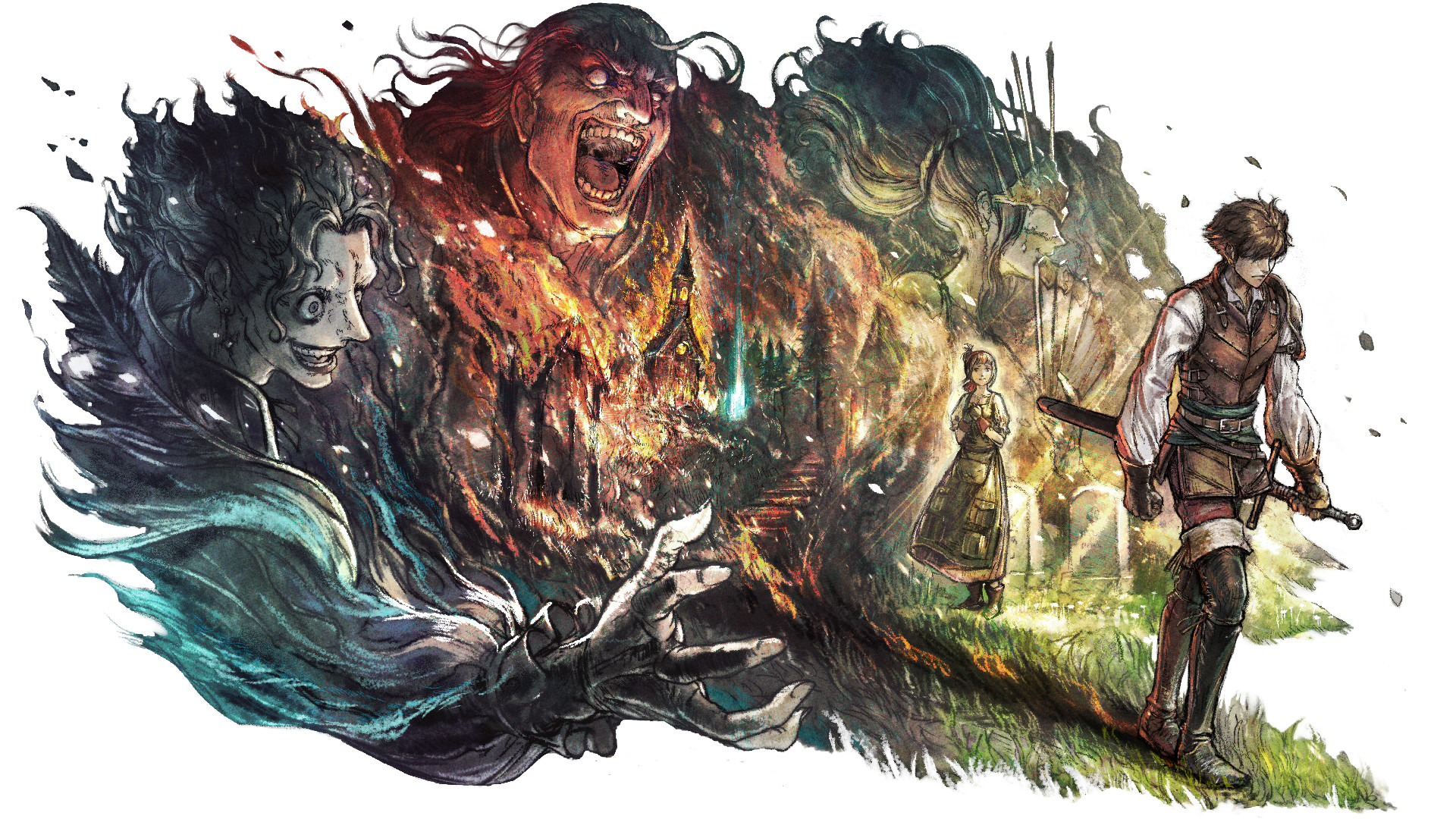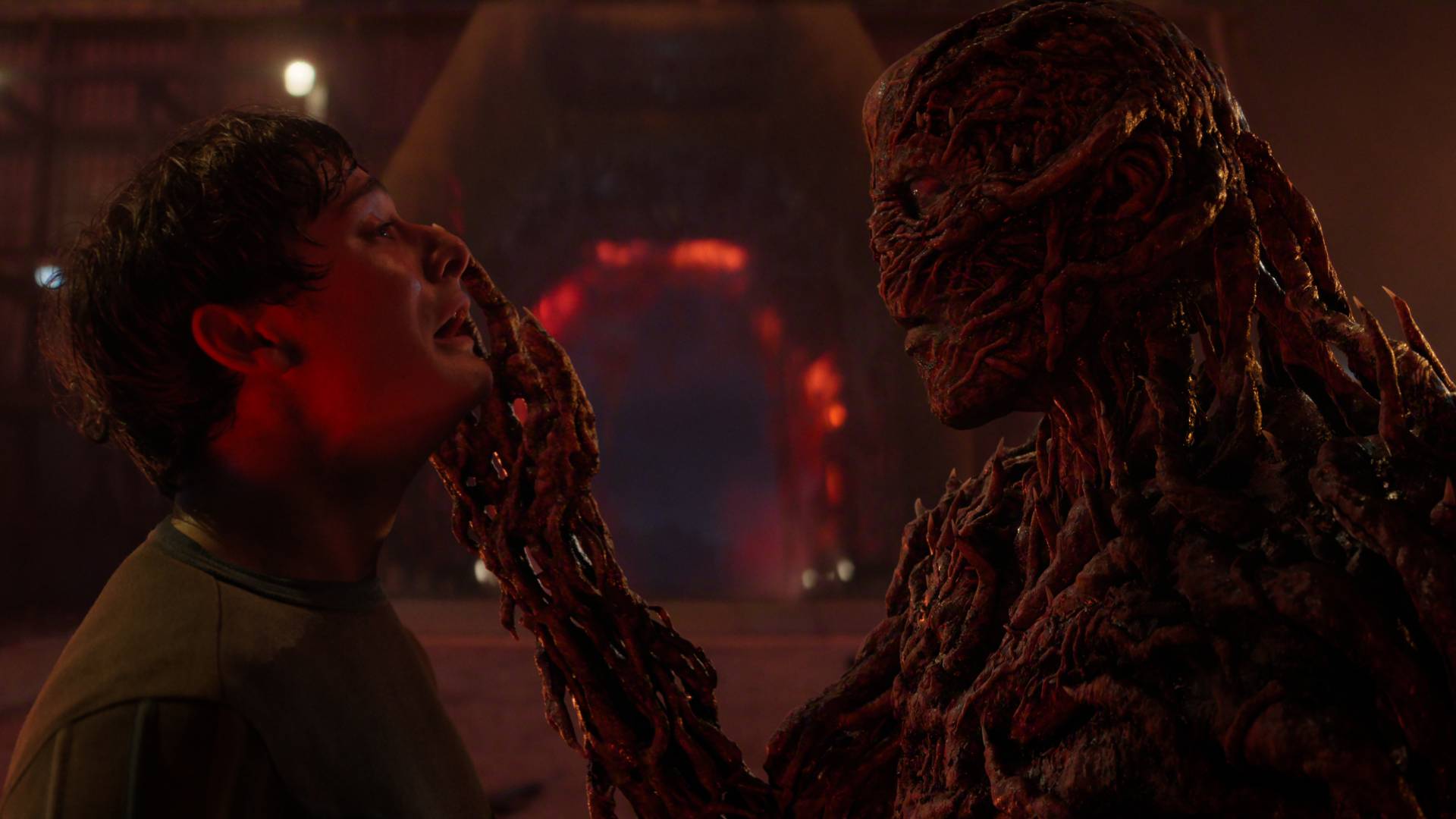Halo: Campaign Evolved hands-on: Is this Unreal Engine 5 remake a bizzaro world Combat Evolved or an "opportunity to pave the way for the future of Halo"?
Hands-on | Even with the classic Halo feel intact, Combat Evolved has... evolved
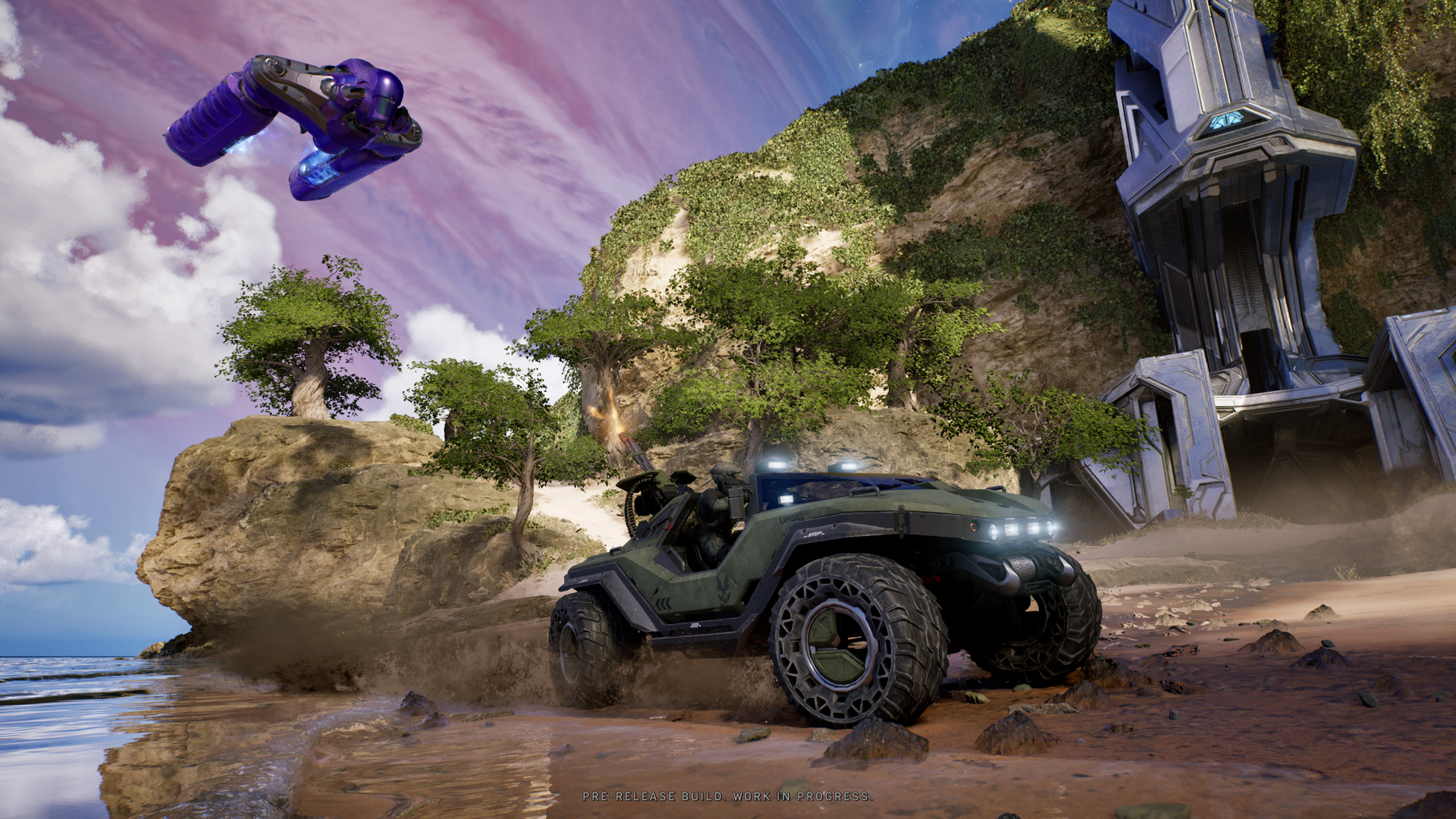
It's finally happening. Halo is going to be playable on PlayStation. This is the sort of thing which would have been utterly unimaginable when Combat Evolved landed nearly 25 years ago, that Microsoft would have ever allowed Master Chief to wander beyond the borders of the Xbox ecosystem. Everything changes with time. After all, it would have been equally unimaginable back then to think that Halo would ever be in the position that it is today – struggling for relevancy in a genre it once revolutionised.
What we're looking at here is Halo: Campaign Evolved. It's the original 2001 campaign reimagined in Unreal Engine 5. A remake built atop the legacy codebase, an engineering trick The Coalition has pulled with Gears of War in the past, and more recently, Bethesda with The Elder Scrolls 4: Oblivion Remastered – though, to be clear, what Halo Studios is shooting for here is far more ambitious. Halo: Campaign Evolved feels newer, as if the past is being used as a guiding hand rather than a direct reference point.
It's why controversial features like sprint and weapon magnification return, a hangover from 343 Industries' contributions to the franchise. And why more forward-thinking improvements are coming; nine weapons which weren't available in Halo: Combat Evolved, including the Energy Sword and Battle Rifle, find their way into the arsenal; there's the ability to pilot the Wraith too, and hijack enemy vehicles. The principal cast has returned to deliver new performances, and Halo Studios has even promised that slight tweaks are coming to the dreaded trudge through The Library.
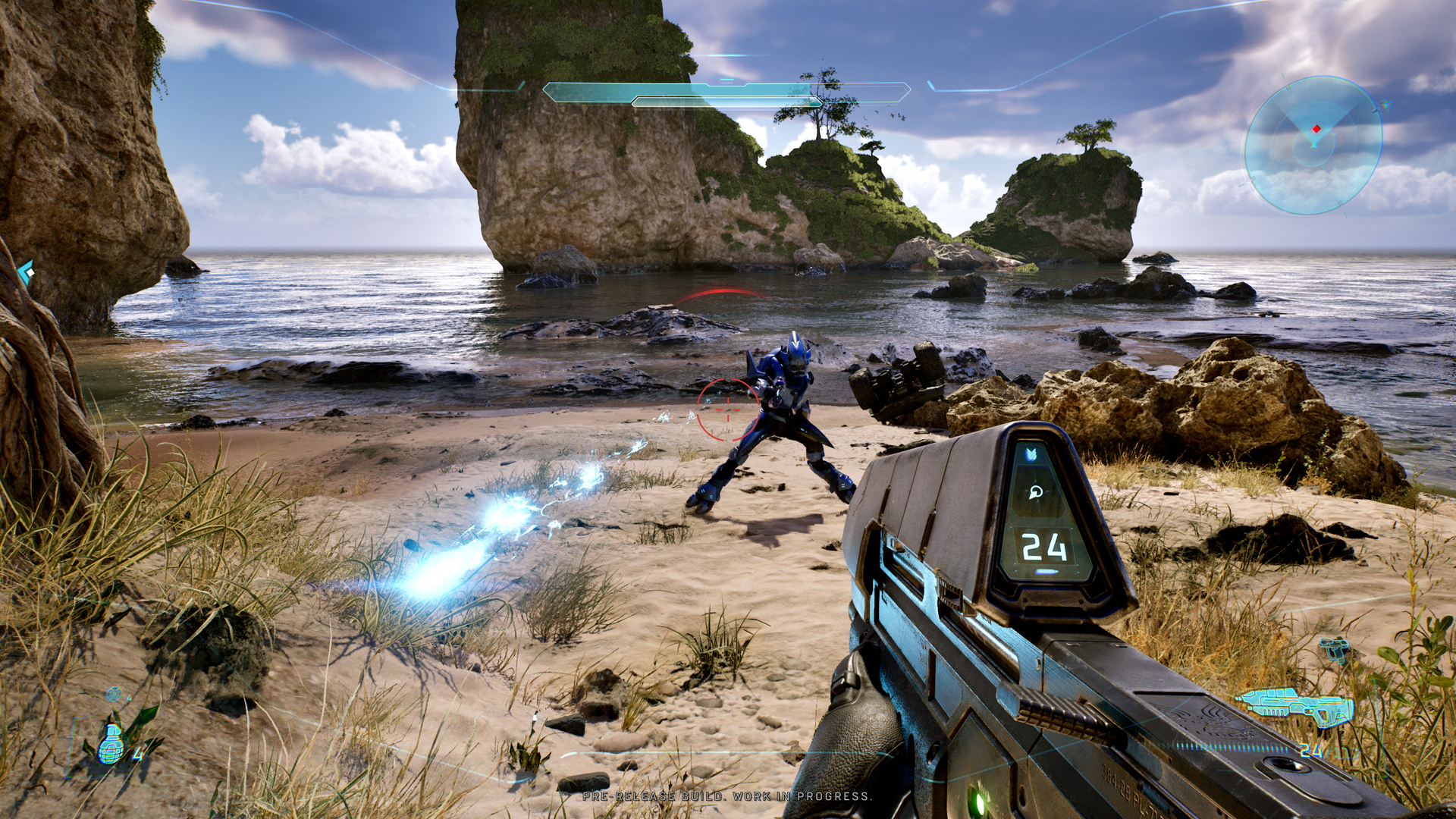
I was able to play a subsection of the iconic Silent Cartographer mission on Xbox Series X. This very early work-in-progress build of Halo: Campaign Evolved doesn't necessarily represent the final experience that's shipping on PC, PS5, and Xbox in 2026 – it's more proof-of-concept than anything else, a showcase designed to settle any fears about the Halo franchise shifting to Unreal Engine 5. Bungie's proprietary Blam! game engine powered the first five core Halo games, with Infinite shipping on 343's in-house Slipstream. These sorts of changes can have seismic impacts – across everything from movement, momentum, weapon-feel, physics systems, and so on.
What I'll say is that Halo: Campaign Evolved does feel suitably Halo. The MA5B assault rifle still chatters as it tears through Elite energy shields. The M6D pistol still hits like an overtorqued bolt through Grunt and Jackal skulls, their bodies littering a beachhead restored with an impressive attention to detail. It's good to hear actual Cortana again, actor Jen Taylor unburdened by any hint of rapancey or resets.
Foehammer whipping Echo 419 around to drop off a Warthog is as exhilarating today as it was 25 years ago. It's here where I first catch the horizon, following the bending arc of the Installation 004 superstructure up beyond the axis of my vision. It's stunning. I honestly can't wait to see The Pillar of Autumn, and some of the wider vistas, born out in this more luscious art style. And the Warthog is still stunningly silly to drive, bouncing around terrain as hapless UNSC soldiers drag a blazing turret around.
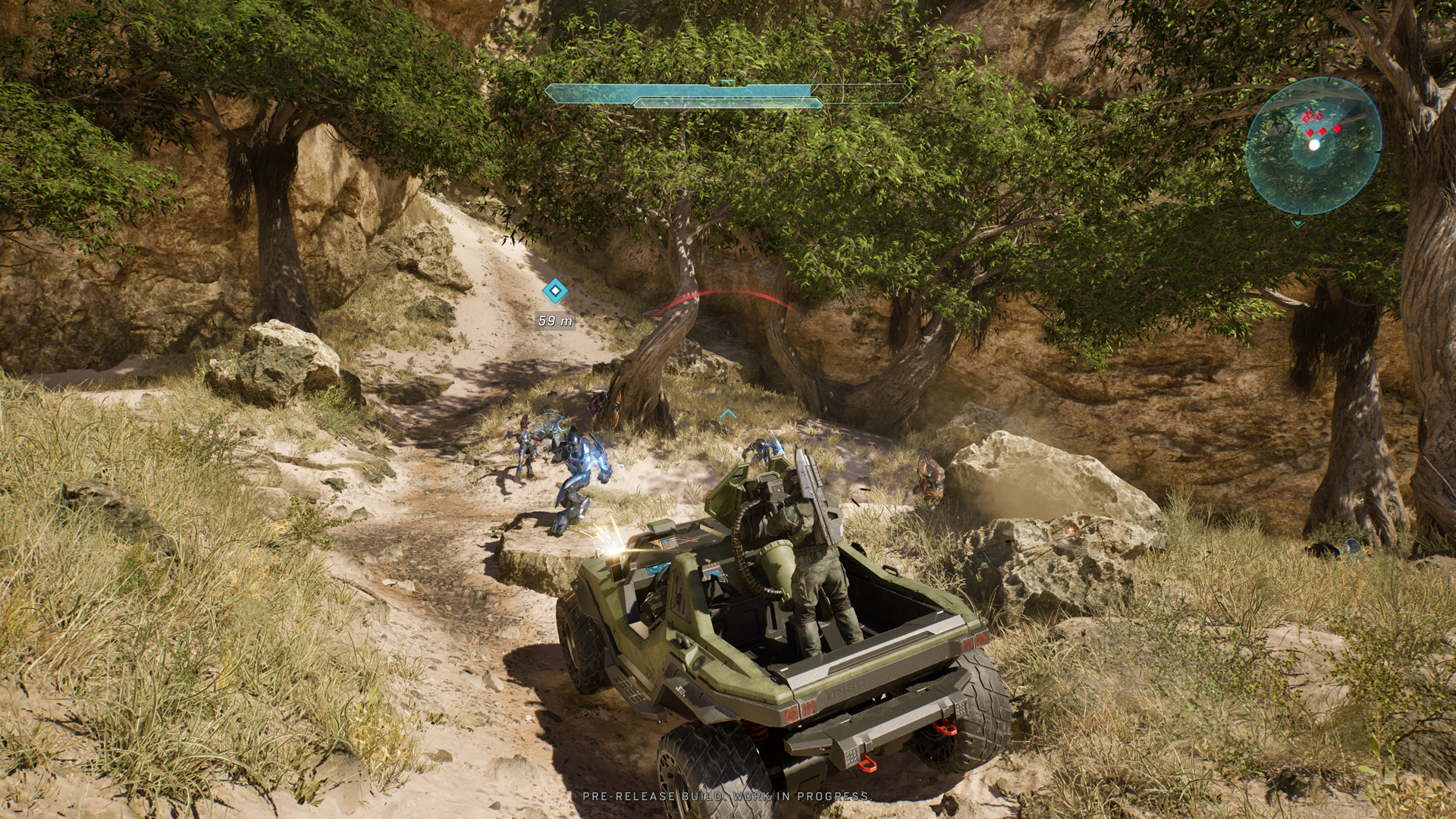
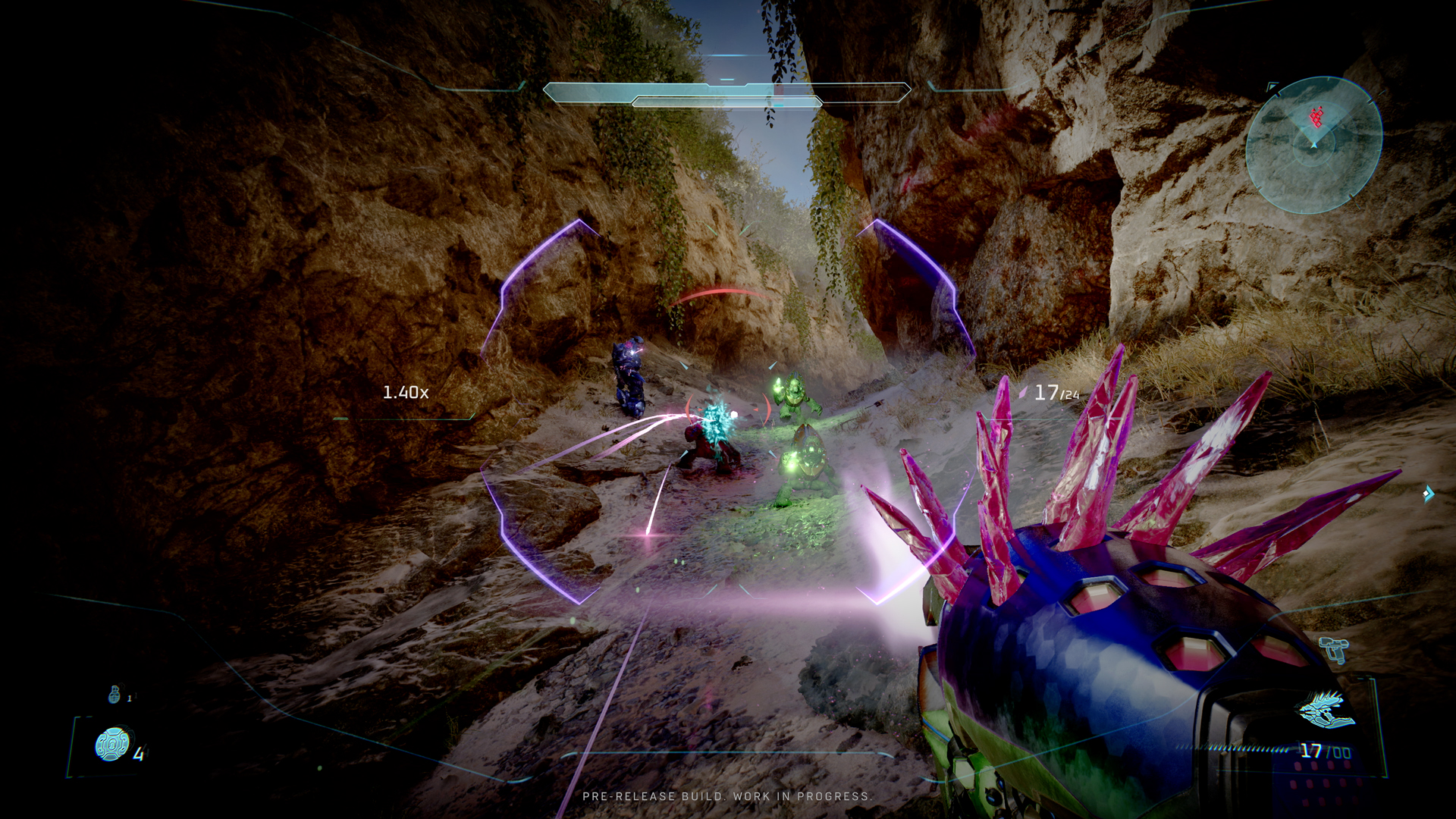
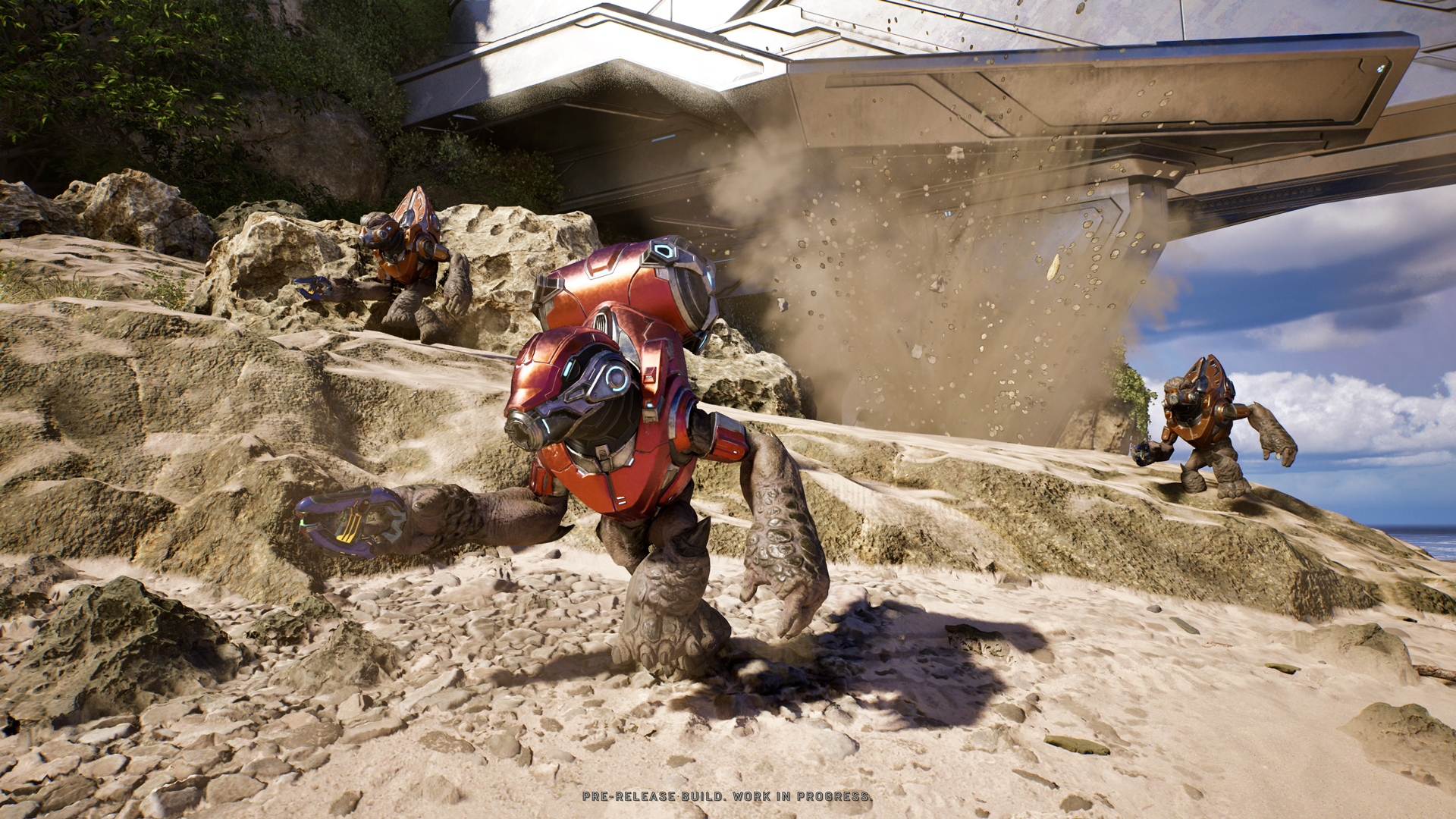
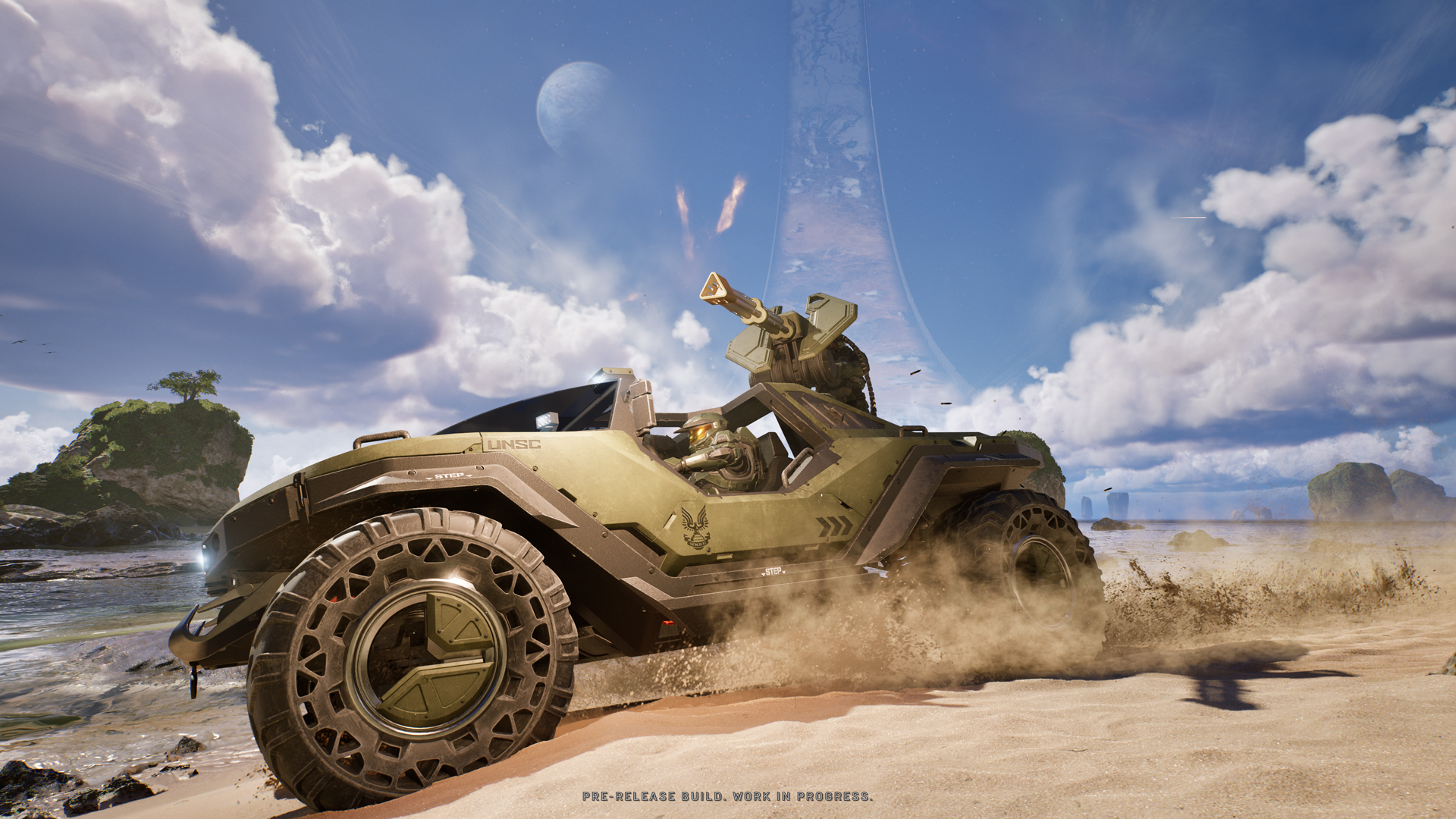
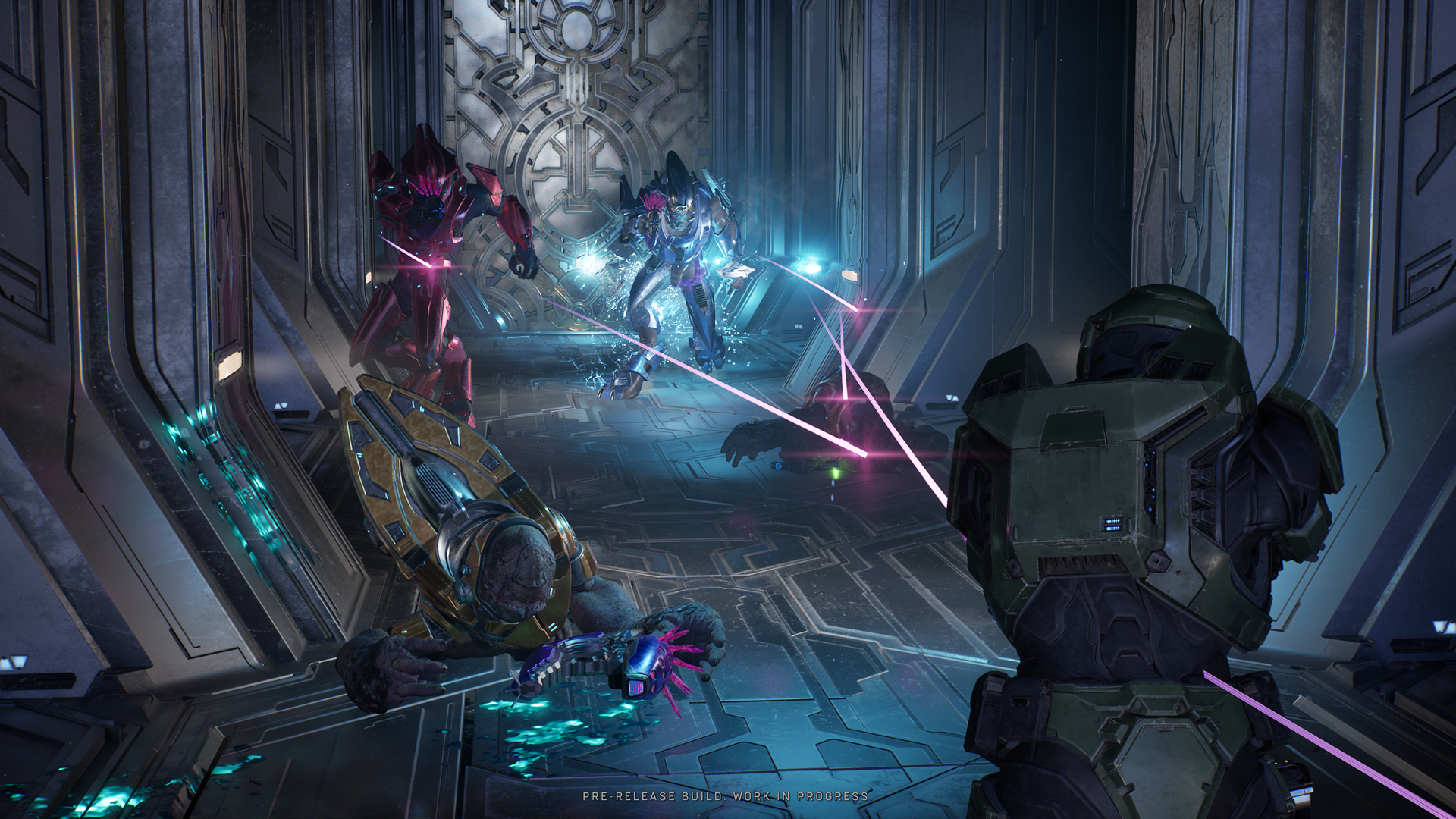
The physics feel right, which was my primary concern heading into this. For series veterans, Halo: Campaign Evolved will undoubtedly be a nice flash of nostalgia, a return incentivised by the addition of four-player online co-op (with full crossplay support) and a promise of the most gameplay-modifying Skulls to ever feature in a Halo campaign. For those coming in for the first time, this early demo signals that the wonders of Halo: Combat Evolved built to modern standards of visual fidelity and performance is incoming.
Weekly digests, tales from the communities you love, and more
I think my big fear here is how elements like sprint are ultimately going to disrupt the foundations of Combat Evolved. Halo Studios says it has gone to great lengths to preserve the pacing of the original adventure; that's easy to say, but I'm not convinced that giving players even the option to blindly sprint through environments does make this goal largely unachievable.
Sprint can be disabled in the menus, but the problem the feature inherently creates isn't rooted in player choice but rather the intentionality in which Bungie approached the original underlying design. Halo: Combat Evolved's pacing is almost entirely dictated by the speed in which you are able to amble through its atmospheric environments. Increased movement speed made sense in Halo Infinite's sprawling open-world, but here it feels unnatural. I worry about how this design decision will impact the experience for first-time players, and whether it will weather away the awe, the tension, the release.
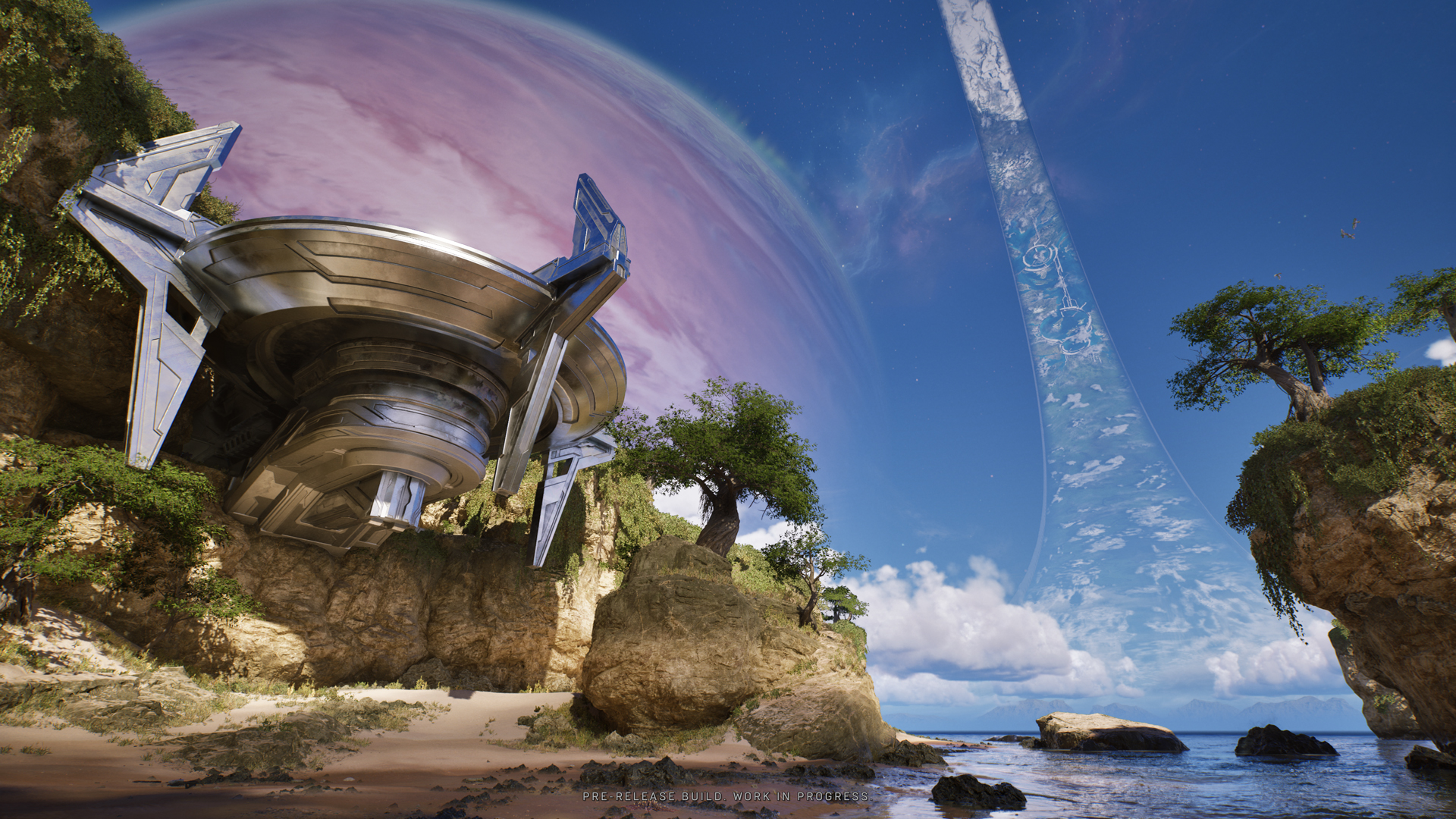
Perhaps debates surrounding attempts at modernization versus design intention will fade over time, as more of the game is made playable. Either way, with Halo Studios banking on Halo: Campaign Evolved to act as a proof-of-concept for the future of the franchise, the devil is in the detail. Nowhere is that going to be truer than in three new prequel missions that will feature new environments, gameplay, characters, and enemies – tracking Master Chief and Sgt. Johnson on a new adventure set before Combat Evolved. I'm keen to see these sections for myself in the future.
Faithfully remaking the original game will demonstrate whether Halo Studios has a handle on the basics, but entirely new missions will give us clear insight into whether the group has the vision to deliver something all of its own. As executive producer Damon Conn tells me (and I'll have more to share from our chat in the days ahead), Halo Studios believes that Campaign Evolved "is an opportunity to pave the way for the future of Halo." That's a journey which begins with "rebuilding the classic that started it all in a brand new engine for a new audience and veteran players alike."
What I have seen and played of Halo: Campaign Evolved so far are promising, even at this early stage. There's still a lot to see and a lot more to learn, but it's certainly true that Halo is in desperate need of some new energy. So what better place to start than where it all began.
The OG still ranks high among the best Halo games of all time.

Josh West is the Editor-in-Chief of GamesRadar+. He has over 15 years experience in online and print journalism, and holds a BA (Hons) in Journalism and Feature Writing. Prior to starting his current position, Josh has served as GR+'s Features Editor and Deputy Editor of games™ magazine, and has freelanced for numerous publications including 3D Artist, Edge magazine, iCreate, Metal Hammer, Play, Retro Gamer, and SFX. Additionally, he has appeared on the BBC and ITV to provide expert comment, written for Scholastic books, edited a book for Hachette, and worked as the Assistant Producer of the Future Games Show. In his spare time, Josh likes to play bass guitar and video games. Years ago, he was in a few movies and TV shows that you've definitely seen but will never be able to spot him in.
You must confirm your public display name before commenting
Please logout and then login again, you will then be prompted to enter your display name.
